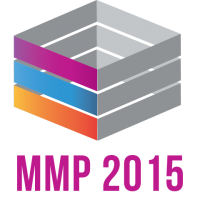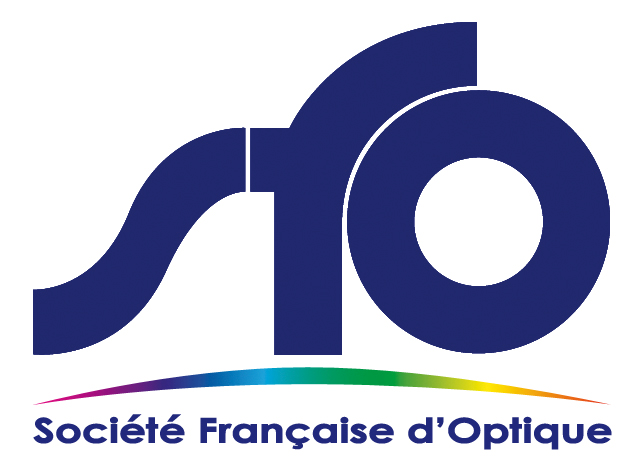We have the great pleasure to announce the following outstanding invited speakers for the workshop:
Regis Hamelin [Blumorpho] - Moderator of the panel discussion
Regis Hamelin has an engineering degree in material science and a PhD in Electronics from the University of Lille, he worked on semiconductor lasers in the optronic team of IEMN (1993). He worked 7 years in the optronic department of LETI as process engineer and program manager. He developed an expertise in compound semiconductor photonic component manufacturing and packaging, exploring various application fields from II-VI Infrared and Gamma-ray imaging to Long Wavelength VCSEL.
In 2003, he co-founded Intexys Photonics, a start-up pioneering the active Optical Cable Market, enabling server to server optical interconnects in high end supercomputers. As CTO and member of the board, he was involved both in commercialisation and strategic decisions.
In 2010, Regis Hamelin joined Euripides, the Eureka cluster in Smart System, to work in the COWIN team, a support action of the FP7 to speed up commercialisation of technologies developed in the frame of Smart System calls. COWIN lead to the foundation of BLUMORPHO which he joined at the launch of the company in January 2015.
Regis Hamelin is expert in innovation management with a focus on technology assessment from research to market..
Markus Rossi [HEPTAGON]
Formerly head of CSEM Zurich Replicated Micro-Optical Elements, Markus became CTO of Heptagon after CSEM’s microoptics division was acquired by Heptagon in 2000. He is an expert on fabricating diffractive and refractive micro-optic components for industrial applications in the European and US markets. Markus holds a Ph.D. in micro-optics from the University of Neuchatel, Switzerland and a master’s degree in physics from ETH Zurich.
Roberto Longone [OCLARO]
Roberto has a master degree at Milano Politecnico in Optoelectronics. He is leading the Lithium Niobate chip design and wafer technologies team as part of R&D group in Oclaro San Donato. He has more than 20 years of experience in developing electro-optic components at Pirelli, JDSU, Bookham and Oclaro mostly on Lithium Niobate and InP modulators. Over the years he contributed to design and develop modulator products from 2.5G to 100G. He is currently focused on design and technology development for 400 G applications.
Arne Leinse [LioniX]
Arne Leinse (Project-/account manager & Vice President) received a M.Sc. degree from the University of Twente in the integrated Optical Microsystems group in 2001. In this same group he started his PhD work on the topic of active micro-ring resonators for various optical applications. His PhD work was carried out in the framework of a European project (IST 2000-28018 “Next generation Active Integrated optic Sub-systems”) and his thesis was titled: “Polymeric micro-ring resonator based electro-optic modulator". In 2005 he joined LioniX BV where he was involved in the invention and development of the TriPleX™ platform from the beginning. He has been involved from the original concept until the exploitation. He is now a member of the management team and involved in a variety of (integrated optical) projects and the strategic roadmap of the technology and LioniX.
Daniel Dolfi [Thales R&T]
Graduated from the “Ecole Supérieure d’Optique”, Orsay, (1986), received the PhD degree from University Paris XI Orsay (1993) and the “Habilitation à Diriger des Recherches” in 2008. He joined Thomson-CSF Corporate Research Laboratory (now TRT-France), in 1986 where he is currently Director of the Physics Dept. His main research interests include optoelectronic generation and processing of microwave and THz signals, non-linear optics in fibers, opto-electronic devices (down to nano-scale) and sub-systems (e.g. sensors), and active optronic systems (lidars and imaging systems). He is EOS Fellow and OSA Fellow.
Vladimir Ya. Shur [Labfer]
Vladimir Ya. Shur graduated at the Ural State University, Ekaterinburg, Russia in 1967. He received the M.S. degree in physics in 1967, the Ph.D. degree in 1974, and the Dr. Phys.-Math. Sci. degree in 1990, all from the Ural State University. He founded the Ferroelectric Laboratory of USU in 1982 and director of the Ural Center of Shared Use “Modern Nanotechnology”, Ural Federal University. He is President of the Ural Branch of Optical Society of Russia. He is currently engaged in research of the kinetics and statics of the domain structure in ferroelectrics, and micro- and nanodomain engineering in lithium niobate and lithium tantalate for nonlinear optical applications. He is an author or coauthor of more than 260 publications in peer-reviewed journals and 6 book chapters.
Sakellaris Mailis [ORC, Univ. of Southampton]
Dr Sakellaris Mailis is an Associate Professor at the Optoelectronics Research Centre (ORC), University of Southampton. He’s got a Physics background and research experience in photonics (optical information storage and processing, optical waveguides) and materials science. He is leading the lithium niobate group at the ORC and over the years has made contributions in the area of laser materials processing, direct laser writing of optical waveguides and ferroelectric domain engineering of lithium niobate. He is currently investigating ferroelectric/semiconductors hybrid material platforms for photonic applications. He has published over 150 journal and conference papers, including a book chapter and two review articles.
Valerio Pruneri [ICFO]
Valerio Pruneri is an ICREA Industrial Professor, Corning Inc. Chair and group leader at the Institute of Photonic Sciences (ICFO). Previously he worked for Avanex, Corning, Pirelli, and the Optoelectronics Research Centre (University of Southampton).
He has more than 30 patents and 60 invited talks at major international conferences.
In recognition to his effort in industrially oriented research, he received the Philip Morris Prize for Scientific and Technological Research, the Pirelli Research Fellowship, the IBM Faculty Award, the Corning Inc. Professorship and the Duran Farell Prize for Technological Research.
Guillaume Saint-Girons [Ecole Centrale de Lyon]
Guillaume Saint-Girons is Engineer from INSA de Rennes (1999), Doctor from the Paris-VI University Paris VI (2002), and holds an accreditation to supervise research from the Claude Bernard University – Lyon-I (2009). He joined CNRS as a researcher in 2002, and is co-head of the heteroepitaxy and nanostructures team at the Lyon Institute of Nanotechnology (INL) since 2010. He is director of the RIBER-INL joint laboratory on oxide molecular beam epitaxy since 2013. He is a specialist of the epitaxial growth and of the structural and optical properties of semiconductor and oxide based heterostructures and nanostructures. He has supervised six PhD theses and given more than 250 teaching hours. He coordinated five national research projects and one workpackage in an EC-FP7 project. He has authored or co-authored three patents, 24 invited conferences and 91 articles in international peer-reviewed journals (H factor 20).
Thomas Lévèque [CNES]
Thomas Lévèque is an engineer in CNES Optics Department. He holds an engineering degree from Institut d’Optique Graduate School (2007) and a PhD in physics from Université Pierre & Marie Curie (2010). He is in charge of coordinating R&D activities related to fundamental physics and metrology for future space missions. In particular, he is a specialist of cold atom technologies and related laser design.
John Dudley [FEMTO-ST & IYL 2015]
John Dudley is Chair of the International Year of Light Steering Committee and serves as President of the European Physical Society until April 2015. John was educated in New Zealand but holds dual nationality with France and has been at the l’Université de Franche-Comté-CNRS Institut FEMTO-ST in France since 2000. His research interests cover broad themes in optical science, and he is currently co-investigator on an ERC Advanced Grant. He has received recognition as Fellow of the European Optical Society, the IEEE and the OSA, and has also received the SPIE President’s Award, the Prize of the iXCore Research Foundation and the French CNRS Medaille d’Argent.

![]()

![]()
![]()
![]()
![]()
![]()
![]()
![]()
exhibition > more info
The exhibition space is organised by the french competitiveness cluster "Pôle des Microtechniques"
guided tours > More info
All visits are free but registration is compulsory (the number of visitors is limited)


